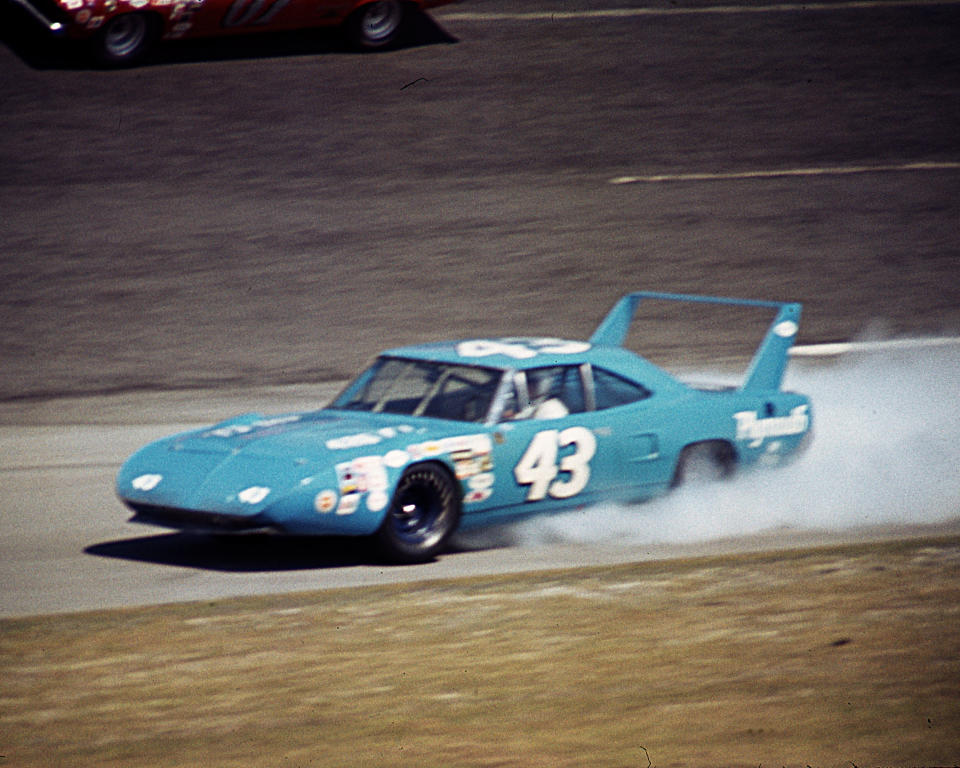The Plymouth Superbird Was Slower than the Dodge Charger Daytona

The "Winged Cars" from Chrysler are still among the most ostentatious cars ever sold to the general public by Detroit automakers. Many people, upon seeing a wing, simply proclaim that they are looking at a Superbird, unaware that the Charger Daytona had come out a year earlier with its own wing and nosecone. The confusion is understandable because Dodge had only needed to build and sell 500 of the Charger Daytonas to qualify them as stock (they probably built 503) while Plymouth had to sell 1,920 Superbirds due to NASCAR rule changes in 1970. So, the Superbirds outnumber their Dodge cousins by almost four to one.
But the bragging rights actually go to the Charger Daytona. Not only was it built first but it was faster than the Superbird.
These kinds of arguments are endless as all car guys know, but the Charger Daytona was the result of a program inside Chrysler which was directed by aerodynamicists and pushed through by managers and supervisors who simply wanted to win in NASCAR. How else do you get a car on the showroom floor with a nosecone and an outlandish wing?
The Superbird was a different story. Plymouth's most famous driver, Richard Petty, decided to leave the brand since Plymouth couldn't give him a winged car. Plymouth's pitch to Petty? Just keep winning in a Plymouth without a wing. Petty didn't think that would be possible so he went to Ford for the 1969 season. To lure him back in to the fold, Plymouth promised Petty a winged car for 1970 and the Superbird program was started.

Plymouth did not operate like Dodge, however. There, stylists were aghast at the notion of hanging a nose cone and a huge wing on one of their cars. When they were told it was going to happen, they balked. An agreement was struck: The stylists would put a nose cone and a wing on the car but they could tweak it to make it look "better." Someone thought the nosecone wasn't shaped right and the wing needed to be leaned back a little bit. A few other minor line changes were made when the car was put into production. Never mind the fact that the exact shape of the nose cone and the precise design of the wing had been perfected in wind tunnel testing at a great cost.
The aerodynamics guys and the test drivers all agreed: The changes made to the Superbird made the car slower. Various studies done with models and full size cars confirmed it. Documents from the era showed the car was anywhere from one to three MPH slower than the Charger Daytona when all other factors were equal.
Was a one to three MPH difference in speed an actual problem in 1970 NASCAR? It certainly would be in qualifying, where a few MPH separates the pole from the guys a few rows back. And over the course of a 500 mile race? Think of all the races we've seen where the margin of victory is inches or feet. Spread out over hundreds of laps and hundreds of miles, Yes, the one to three MPH made a difference.
Still, the Superbird won a lot of races in 1970. The stylists at Plymouth, however, were not doing them any favors when they slowed the car down to make it look "better."
Steve Lehto is a writer and attorney from Michigan. He specializes in Lemon Law and frequently writes about cars and the law. His most recent books include Preston Tucker and His Battle to Build the Car of Tomorrow, and Dodge Daytona and Plymouth Superbird: Design, Development, Production and Competition. He also has a podcast where he talks about these things.
You Might Also Like

 Yahoo Autos
Yahoo Autos 